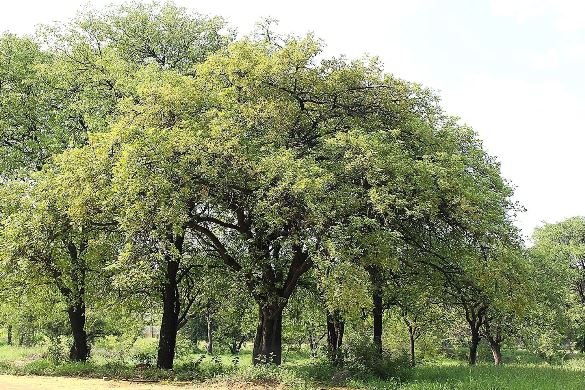Lannea schweinfurthii var. stuhlmannii

Author: Ivan Lätti
Photographer: Piet Grobler
Lannea schweinfurthii var. stuhlmannii, commonly known as the false-marula, is a small to medium-sized tree that is dioecious (male and female flowers on different trees) and deciduous (losing the leaves in the rest season). The tree has drooping branches and grows a sparse crown to heights around 8 m (SA Tree List No. 363).
The bark is brown in several shades and sometimes grey. It flakes in pieces, exposing cream underbark that causes a mottled effect. The branchlet tips are thin and stiff.
The leaves are compound, imparipinnate or trifoliolate, as there is sometimes only one leaflet pair apart from the terminal leaflet. The leaflets are ovate to elliptic, even nearly circular, the terminal leaflet the biggest. Leaflet tips attenuate abruptly. The blades are shiny pale green, turning yellow in the fall. Hairs on young leaves may disappear later.
Small, creamy white flowers grow in catkin-like spikes from leaf axils near stem-tips. This happens from late spring to after midsummer.
The reddish to dark brown fruit is an indehiscent, fleshy drupe, oblong to ovoid in shape and ending in four protuberances. Each fruit contains one stone. The fruits are borne in bunches of about 6 cm long, the fruit dimensions about 12 mm by 6 mm. The fruits are eaten by birds, animals and people.
The species distribution is in Limpopo, the Mpumalanga Lowveld and the far north of KwaZulu-Natal, apart from a wide distribution in tropical Africa.
The habitat is wide-ranging, including open woodland, dry bushveld, rocky outcrops, riversides and termite mounds. The species is not considered to be threatened in its habitat early in the twenty first century.
The tree differs from the marula in the mottled bark, the thin twigs, the leaf-shape, the fruits and the shape of the crown. The false-marula grows fast from seed or cuttings but is frost sensitive. The wood is soft, used in carving. Plant parts feature in traditional medicine (Coates Palgrave, 2002; Schmidt, et al, 2002; Van Wyk and Van Wyk, 1997; Pooley, 1993; iNaturalist; http://redlist.sanbi.org).

